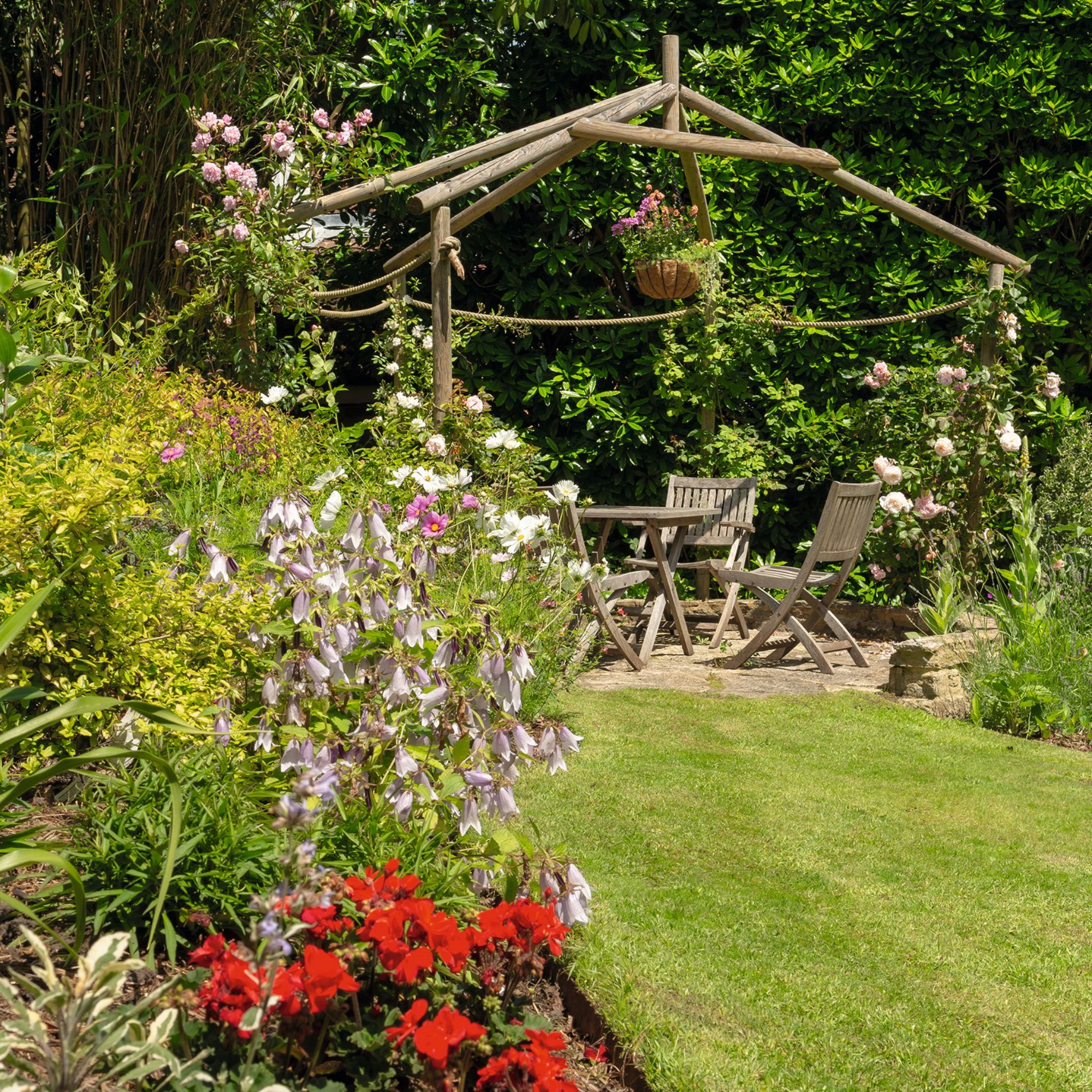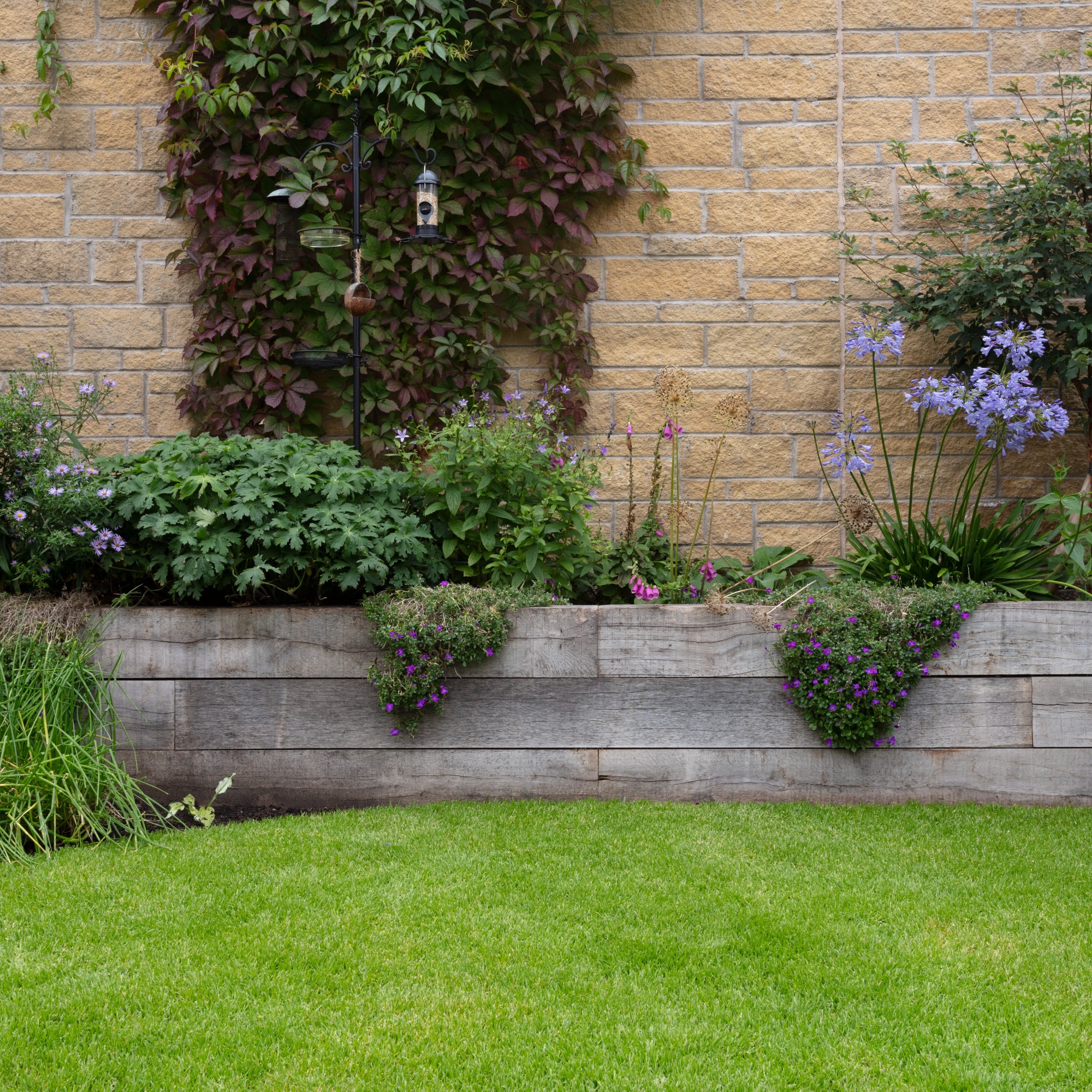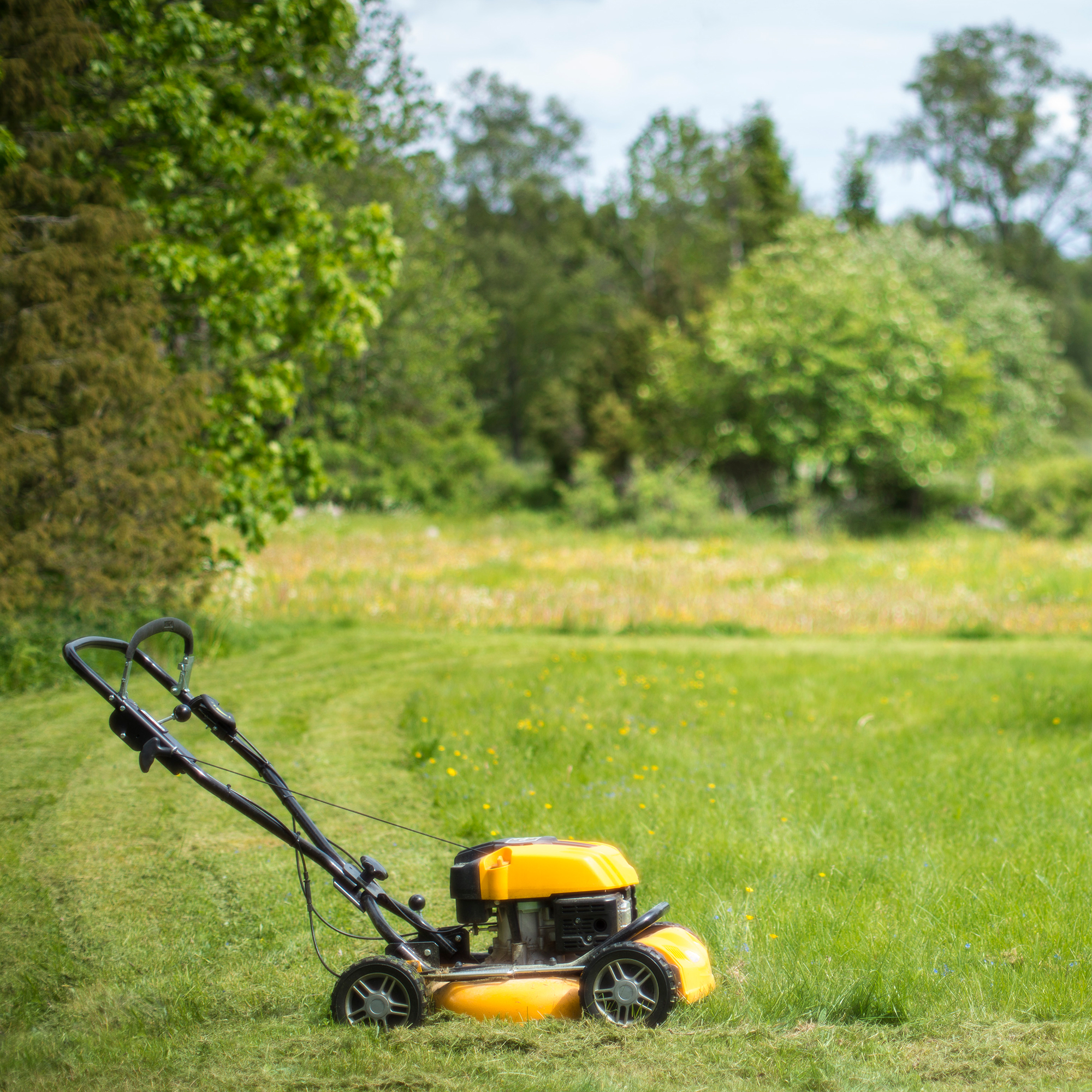
Summer months in the UK are a blessing and a curse. On the one hand, the hot sunny weather brings out all the beautiful blooms and allows us to enjoy the wonder of our gardens. But on the other hand, too much heat can be overwhelming, and heat stress on lawns is extremely common.
Yes, while you might already be familiar with the signs of heat stress on your plants, many of us fail to acknowledge what is often the biggest plant in our gardens: our lawns. This heat stress can ruin your lawn care efforts in just a few weeks and cause even the healthiest of lawns to struggle.
As Peter Chaloner, Managing Director of Cobra, explains, ‘Grass is known for its resilience, but even this hardy plant can suffer under extreme conditions. The UK is currently experiencing unusually hot weather, and your lawn may be showing signs of stress as a result.’ So, these are the signs of heat stress on a lawn and what you can do to fix it.

Signs of heat stress on lawns
In most cases, you can tell simply by looking at your lawn whether it’s suffering from heat stress or not. Below are a few of the signs you should be looking out for:
- Change in colour and texture: While yellow lawns aren’t uncommon during the summer months, Peter says heat-stressed lawns ‘often turn yellow and straw-like, entering a survival mode due to depleted soil moisture.’
- Lack of growth: According to the lawn mowing calendar, you should be mowing your lawn 4-8 times throughout the summer. But if you’re finding that your lawn just isn’t growing as much as it should, this is a sure sign of heat stress on lawns.
- Compacted soil: Another sign of heat stress on your lawn is compacted soil, which may require a closer look and a more hands-on investigation approach. To test this, attempt to stick a garden fork into the soil. If you can stick it in with ease, your lawn is relatively healthy. If you face any resistance, it’s highly likely that it’s suffering from heat stress.
- It lays flat: If you were to walk across a healthy lawn, you should find that the blades of grass bounce back as soon as you’ve moved off them. If your lawn is heat-stressed, however, you’ll find that the blades will just lay flat due to lack of moisture.

How to treat heat stress on lawns
If you’ve spotted any of the signs above, it’s important to take the right steps to treat your heat-stressed lawn. After all, prolonged periods of heat stress can kill your grass.
1. Avoid further damage
Heat stress can come in varying forms of intensity. And while the hot weather and sunny conditions can indeed make it worse, so can human intervention. So, it’s essential that you do everything you can to avoid further damage.
Peter says, ‘To aid recovery try to keep off the lawn as much as possible; walking on stressed grass can cause further damage. Also, remove objects such furniture and toys from the grass, to avoid creating dead spots, allowing the lawn to breathe and recover.’
Of course, you shouldn’t put garden furniture on your grass anyway, so you may only have to stop walking on it.
2. Don’t rush to water it

When you spot the signs of heat stress on your lawn, you may assume that watering it will solve all of your problems. And while a heat-stressed lawn certainly needs hydration, you have to go about this strategically.
Peter says, ‘Grass can often recover naturally with the return of rain. Overwatering during heat can be wasteful and unnecessary and can even scorch the grass in extreme cases. And with water companies encouraging reduced usage during hot spells, using sprinklers or hoses should be avoided. This helps conserve water and prevents the imposition of hosepipe bans.’
If you know that rain isn’t on the horizon, however, focus on watering your lawn deeply twice a week by utilising the best ways to water your lawn during a hosepipe ban. And just ensure you know the right time to water your grass in the summer.
3. Stop lawn treatments
Whether you want to get rid of weeds in your lawn or your August lawn care list involves late summer fertilisers, you should stop your lawn care treatments immediately.
‘During hot weather, lawn treatments can be too harsh, so avoid using fertilisers and weedkillers,’ warns Peter. ‘They can strip the grass of its remaining moisture and cause additional stress, so hold off on treatments until cooler weather returns.’
4. Tactically mow the lawn

There’s nothing better than using one of the best lawn mowers during the summer months. It can tidy up your garden quickly and leave your lawn looking its best. However, you’ll need to make a few adjustments if your lawn is heat-stressed.
Peter says, ‘Let grass grow longer. Longer grass blades provide shade, reducing moisture loss from the soil, so hold off on mowing and allow the grass to grow taller than usual. When you do resume mowing, set the blades to their highest level to keep the grass from being cut too short, which could exacerbate moisture loss.’
And you should also make the most of leaving your grass clippings on your lawn, too. Peter says, ‘Mulched grass clippings decompose, returning essential nutrients to the soil and aiding in the recovery process.’
How to prevent future heat stress on lawns
While it’s impossible to predict the future, it’s easy to assume that we will have more hot and sunny summers over the next few years. And if you want to prevent future heat stress on your lawn, there are some things that you can do to strengthen it for when the hot weather arrives.
For starters, you should focus your attention on autumn maintenance. Peter says, ‘Once autumn arrives, scarify and aerate your lawn to remove dead material and improve soil health. This prepares your lawn for the next growing season.’
And if you’re not sure how to do that, you can check out our guides on scarifying and aerating to ensure you’re doing exactly what you need to.
Aerating is particularly important, as Peter explains that is ‘ensures your lawn’s soil stays healthy and capable of retaining moisture.’ And it’s these water stores that will come in extremely handy when preventing heat stress.
Also, you may also want to fertilise your lawn. John Marshall, Landscaping expert at Wenningdale Escapes says, ‘For longer-term prevention, creating a good nutrient plan will help build a strong grass plant that will thicken and harden against disease. Alongside this, using seaweed in the grass can help reduce the likelihood of stress and disease.’

What you'll need
If you want to prevent heat stress on your lawn in the future, this aerator will help you out. Simply roll over your lawn to create holes for air and moisture.
If you're not sure how to water your lawn (outside of the sun-scorching hours) a sprinkler can work wonders. Simply attach to a hose, turn on the tap, and let it get to work.
Although you can buy handheld scarifiers, motorised ones are so much easier to use - and way more effective, too.
FAQs
Should I mow the lawn in very hot weather?
In an ideal world, you should leave your lawn well alone during the hot weather. The longer blades of grass will offer some much-needed shade for the soil, and cutting them down can result in heat stress and potentially even kill your lawn.
If you have no choice but to mow your lawn, opt for the highest setting possible on your lawn mower so you keep the stress to a minimum.
What is the best fertiliser for heat-stressed grass?
When your grass is suffering from heat stress, you should avoid using any fertilisers at all. That’s because this can ultimately cause even more damage.
If you do want to use a summer fertiliser, though (when your lawn isn’t suffering from heat stress), you should use a low-nitrogen lawn fertiliser. This will prevent burning and scorching and help your lawn maintain its water and nutrients throughout the hot weather.
Is your lawn suffering from heat stress? Hopefully, this guide will help you solve the heat stress on your lawn.







